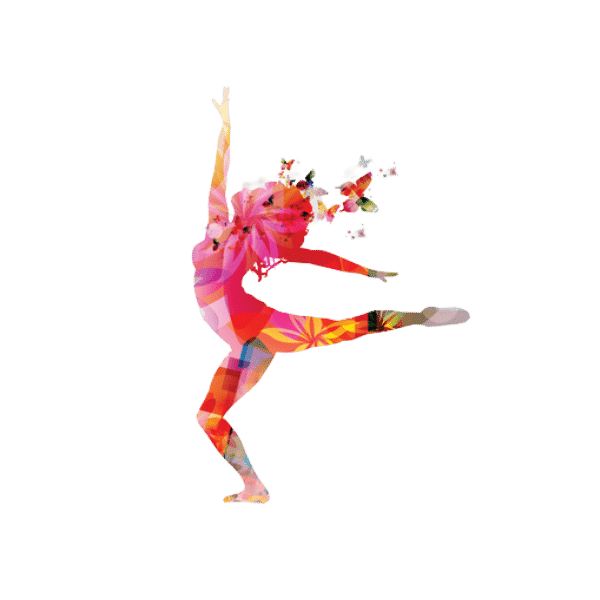IFS Self-Like Parts: When Imitation Becomes Complication

Ever feel like you’re leading with your calm, compassionate Self, only to realize later it was more like a performance? 🎭 Maybe you handled a tough situation with grace on the outside, but deep down, another part of you was running the show. If this sounds familiar, you may have encountered what Internal Family Systems (IFS) therapy calls Self-like parts. 🤔
Self-like parts are internal parts that take on the qualities of the Self—calmness, clarity, or leadership—but they’re not the genuine Self. Think of them as well-meaning understudies pretending to be the star of the show. 🌟 While their intentions are often good, Self-like parts can create confusion and block true healing if they dominate. It’s like having a stand-in who forgets their lines—awkward and counterproductive! 😅
Learn more about IFS Basics here
In this article, we’ll explore the fascinating concept of Self-like parts in IFS, how they show up, and what you can do to recognize and work with them. Plus, we’ll share tools to help you uncover your authentic Self and lead with genuine confidence. 🛠️✨
What Are Self-Like Parts? 🧩🌟
Self-like parts are internal parts that mimic the qualities of the Self but lack its authentic essence. In IFS therapy, the Self is the calm, compassionate leader of your inner system, embodying qualities like courage, curiosity, and creativity. When Self is leading, it creates harmony among your parts. 🌈
Self-like parts, on the other hand, might look and sound like the Self, but they often have an agenda rooted in protection, control, or avoidance. 🤔 These parts step in to “do the job” of the Self, especially when the real Self feels overshadowed by fear, stress, or unresolved emotions. It’s like having a clone that’s trying too hard to fit in! 🕵️♂️😄
What is SELF in IFS?
How Do Self-Like Parts Show Up? 👀🔍
Self-like parts can be tricky to spot because they often seem helpful or “in charge.” Here are some ways they might show up:
The Over-Helper 🩹: This part steps in with a calm demeanor, offering solutions to everyone else’s problems while ignoring your own needs. It’s like that friend who insists on fixing your life while you’re still trying to find your keys! 🔧🔑
The Overthinker 🧠: Appearing logical and composed, this part uses excessive analysis to avoid facing deeper emotions. It’s like having a personal assistant who plans every minute but forgets to schedule your relaxation time. 📅🛀
The Diplomat 🤝: This part pretends to mediate conflicts but is really trying to avoid confrontation. Think of it as the peacekeeper who ends up just nodding along while secretly rolling their eyes. 🙄🕊️
The Inner Teacher 📚: It sounds wise but often preaches from a place of control, not genuine curiosity. It’s like that professor who knows all the answers but forgets to ask questions. 🎓🤷♀️
These parts may genuinely believe they’re acting in your best interest, but their presence can block the true Self from emerging. It’s like having a party crasher who means well but just won’t leave! 🎉🚫
Why Do Self-Like Parts Develop? 🛡️🔄
Self-like parts often form as a protective strategy. Here’s how:
Past Experiences Create Fear 😨📚
Perhaps your true Self was overshadowed or silenced in the past—by criticism, rejection, or trauma. This created a need for protection. It’s like having a backup generator because the main power was unreliable. ⚡🔌
A Part Steps In to Lead 🚀🛠️
A Self-like part emerges to fill the leadership gap, believing it must maintain control to keep you safe. Think of it as the overzealous team captain who insists on calling all the plays. 🏈📣
Reinforcement Over Time ⏳🔗
As this part “plays the role” of the Self, it becomes entrenched in its belief that it’s the only one capable of leading. It’s like that actor who lands a role and can’t let go of the spotlight. 🎬🌟
While their intentions are rooted in protection, Self-like parts can make it harder to access the authentic Self, especially during moments of stress or healing. It’s like trying to hear your favorite song with a bunch of background noise—frustrating and exhausting! 🎶🔇
How to Recognize Self-Like Parts in IFS 👓🧠
Distinguishing Self-like parts from the true Self can be challenging, but here are some clues:
Does It Feel Effortless? 🛌✨
When the Self is leading, it feels natural and calm. If it feels like you’re “trying” to be calm or compassionate, it might be a Self-like part. It’s like doing yoga—if you’re straining to hold the pose, something’s not quite right! 🧘♀️😅
Is There an Agenda? 🎯🗂️
Self-like parts often have a subtle goal, like gaining approval, avoiding discomfort, or maintaining control. The true Self leads without attachment to outcomes. It’s like the difference between planning a surprise party and trying to control every aspect of it. 🎉🗺️
Does It Leave You Feeling Disconnected? 🧊💔
After a Self-like part takes charge, you might feel drained, frustrated, or out of sync with your emotions. It’s like running a marathon and realizing you didn’t actually enjoy the race. 🏃♂️😓
Does It Struggle to Let Go? 🔒🚪
Self-like parts may resist stepping back, fearing chaos will ensue if they’re not in control. It’s like that friend who just can’t leave the party early, even when you’re both exhausted. 🥳😴
How to Work with Self-Like Parts in IFS 🛠️💖
The goal isn’t to “get rid of” Self-like parts but to understand their role and help them trust the true Self to lead. Here’s how:
1. Notice When a Self-Like Part Shows Up 👀🔔
Start by paying attention to moments when you’re leading but it feels forced or performative. Ask yourself:
- “Am I truly connected to my core Self right now?”
- “Is there a part of me trying to take charge?”
It’s like recognizing when you’re wearing someone else’s shoes—awkward and uncomfortable! 👟😬
2. Approach with Curiosity 🧐💬
As with all IFS work, approach Self-like parts with curiosity and compassion. Ask questions like:
- “What are you trying to accomplish by stepping in?”
- “What are you afraid would happen if you stepped back?”
It’s like having a heart-to-heart with that friend who always seems to take over—gentle and understanding. 🤝❤️
3. Build Trust 🤗🔗
Self-like parts often carry a deep sense of responsibility. Reassure them that the true Self is capable of leading. You might say:
- “I appreciate everything you’ve done for me. Would you be willing to let me take the lead this time?”
Think of it as delegating tasks to ensure everyone gets a fair share of the spotlight. 🌟🤝
4. Allow Space for the True Self to Emerge 🌟🌿
Once the Self-like part steps back, take a moment to connect with your core Self. Notice how it feels different—more natural, calm, and grounded. It’s like finally taking off that heavy backpack you didn’t know you were carrying. 🎒😌
What are Parts in IFS?
Practical Exercises for Working with Self-Like Parts 🛠️✨
1. Journaling Conversations 🖊️📓
Write a dialogue between your Self and a Self-like part. Let the part express its concerns and allow the Self to respond with compassion. It’s like writing a script for a more harmonious play! 🎭📝
2. Guided Visualization 🌌🧘♂️
Close your eyes and imagine the Self-like part sitting across from you. Picture yourself gently reassuring it and inviting the true Self to step forward. It’s like hosting a friendly chat with your inner understudy. 🌠👥
3. Body Awareness 🧘♀️💆♂️
Notice where you feel tension or control in your body when a Self-like part is active. Focus on relaxing those areas to invite the Self to lead. Think of it as sending a message to your body: “Hey, let’s chill out now.” 🧘♂️😌
Discover the IFS Self-Like Parts Workshop 🎓🌟
Self-like parts can be challenging to navigate, but our IFS Self-Like Parts Workshop is here to guide you. 🌟 This offline course dives deep into understanding these parts, why they develop, and how to work with them to create lasting harmony. 🛤️✨
In This Workshop, You’ll Learn:
- Identify Self-like parts and distinguish them from your true Self. 🕵️♀️🔍
- Build trust with these parts to help them step back. 🤝❤️
- Strengthen your connection to your authentic Self for more natural leadership. 🌟🧘♀️
Ready to uncover your true Self? Learn more about the workshop here:
👉 IFS Self-Like Parts Workshop
The IFS Guide App: Your Daily Self-Discovery Tool 📲🤖
Whether you’re navigating Self-like parts or exploring other aspects of your internal system, the IFS Guide App is a powerful tool to support your journey. 📱✨
With the app, you can:
- Track your Parts: Keep tabs on Self-like parts and their interactions. 📈🧩
- Have AI-powered dialogues: Chat with our AI assistant, designed to simulate conversations with an IFS practitioner. 🤖💬
- Build daily habits: Use guided exercises to strengthen your connection with your Self. 🧘♀️🌟
Think of it as your personal IFS coach, available anytime, anywhere. Ready to deepen your practice?
Download IFS Guide app today📥
Final Thoughts: Embracing Your True Self 🌟💖
Self-like parts can be tricky to work with, but with patience and curiosity, they offer an incredible opportunity for growth. 🌱 By recognizing their efforts, building trust, and inviting your true Self to lead, you can create a more authentic and harmonious internal system. It’s like upgrading from a puppet show to directing your very own blockbuster movie! 🎬✨
Here’s to uncovering your authentic Self and leading your life with genuine confidence! 🌟🌿✨
FAQ
A: Self-like parts are internal parts that mimic the qualities of the Self—like calmness, clarity, or leadership—but lack its authentic essence. They emerge to protect or control, especially when the true Self feels overshadowed or stressed.
A: You can recognize Self-like parts by their effortful nature, subtle agendas like gaining approval or avoiding discomfort, and the drained or disconnected feelings they leave behind. If you feel like you’re “trying” to be calm or compassionate, it’s likely a Self-like part at work.
A: Self-like parts typically develop as protective strategies in response to past experiences where the true Self was overshadowed, criticized, or silenced. They step in to fill a perceived leadership gap to maintain safety and control.
A: Common examples include the Over-Helper, who tries to fix others’ problems while ignoring personal needs; the Overthinker, who uses logic to avoid emotional depth; the Diplomat, who avoids confrontation; and the Inner Teacher, who controls through knowledge but lacks curiosity.
A: Working with Self-like parts involves recognizing their presence, approaching them with curiosity and compassion, building trust, and allowing space for the true Self to lead. This process helps these parts to step back and integrate more healthily into the internal system.
A: Effective exercises include journaling conversations between your Self and a Self-like part, guided visualizations to reassure and invite the true Self forward, and practicing body awareness to relax areas of tension controlled by Self-like parts.
Monthly IFS Workshops & Challenges!
Every month we organize online workshops to help you get a deeper understanding of IFS!
